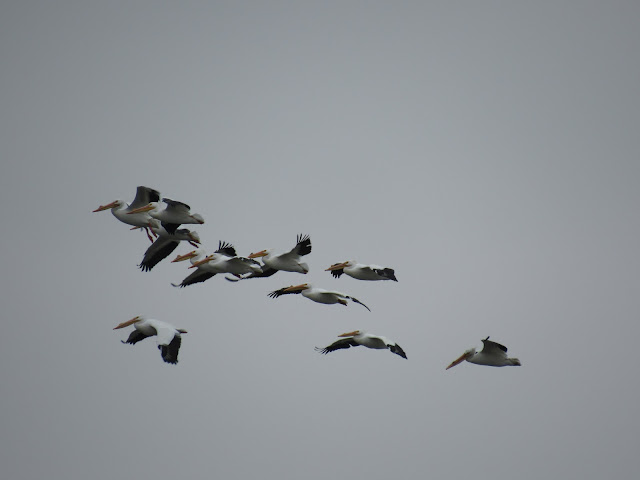We walked along the Illinois River's bank up to the bluff, looking out at the islands. It's on islands like these that bald eagles (Haliaeetus leucocephalus) congregate in winter below Starved Rock Dam, making this one of the best areas in Illinois to spot eagles. The dam keeps the water ice-free, making the eagles able to get fish, their favorite food, from the river.
Here's Starved Rock itself, with the dam in the background. Three kinds of conifer grow on this bluff- Red Cedars (Juniperus virginiana), White Cedars (Thuja occidentalis), and White Pines (Pinus strobus)
Here's a very large red cedar growing near the base of Starved Rock. What a contrast to the straight branches of the Eastern Hemlock in the last blogpost!
On top of the rock, the red cedars are even more gnarled. The dominant species on Starved Rock, red cedars made up most of the woody plant cover on the top of the the bluff.
By contrast, the neighboring Lover's Leap bluff is mostly covered in white pines.
Here, the state-threatened tree White Cedar or Arborvitae is growing alongside the Red Cedar, above the blue waters of the Illinois River. Red, White, and Blue. Hmm. Seems very patriotic.
And, of course, what's more patriotic than a Bald Eagle flying overhead? I love the zoom on my new camera.
Here, the Red Cedar (left) and the White Cedar (right) can be compared easily. White Cedars are extremely common in plant nurseries under the name Arborvitae. It comes as a bit of a shock to me, an ornamental gardener, to see this plant listed as State-Threatened. Still, as a more northern species (boreal disjunct), it's quite understandable.
A group of pelicans flew up and down the river, looking for an easy meal. These are American White Pelicans (Pelecanus erythrorhynchos), a common species along the big rivers in Illinois.
Here you can see these pelicans in all of their various motions. Unlike most pelicans, this species lives along large bodies of water in the interior (not coastal) part of the U.S.A. They can also be found on the coast too, all the way to South America in the winter. The large "wart" on the bill is a sign that these pelicans are ready to breed. Guess what else was ready to breed, too?
I really, really, really, love the zoom on my new camera. I can't say that enough. This bald eagle sitting on the nest was not visible unaided, except as a spot of white above a large round object in a tree. This large cottonwood tree the nest sits in is one of the biggest I have ever seen, and this from a considerable distance. It was the perfect way to end the day, except we didn't, because we went to another set of canyons after this. I've got one last Starved Rock post, with a special discovery, to share, and that will be out later this week. Here in town, the first snakes have appeared, a momentous and happy occasion- for me alone. That will be a future post. Also, I've decided to begin ending posts with a random historical fact. Here's the first one.
Helen Keller, when she was an adult, became a member of the Communist Party, although she was more of a Socialist. She also helped to found the ACLU.











No comments:
Post a Comment